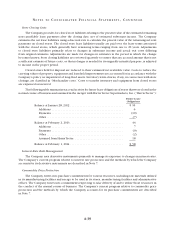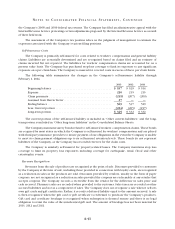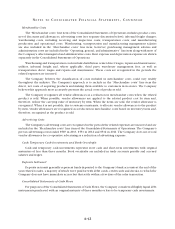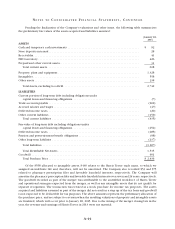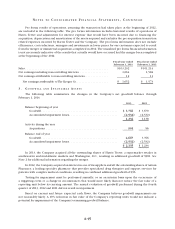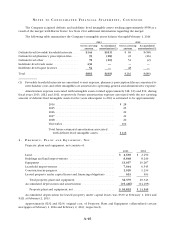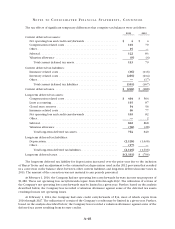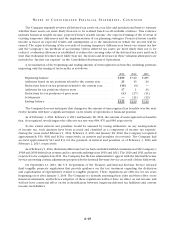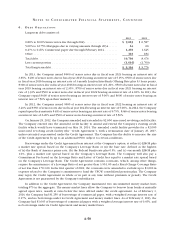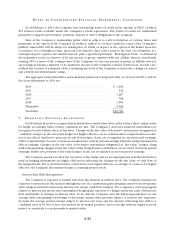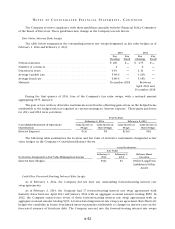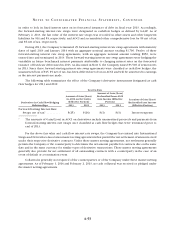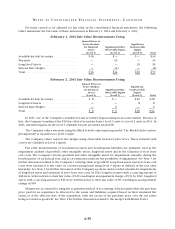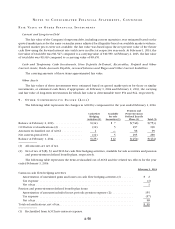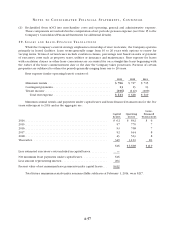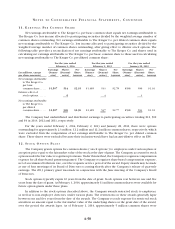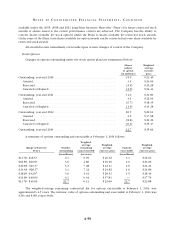Kroger 2013 Annual Report Download - page 122
Download and view the complete annual report
Please find page 122 of the 2013 Kroger annual report below. You can navigate through the pages in the report by either clicking on the pages listed below, or by using the keyword search tool below to find specific information within the annual report.
A-49
NO T E S T O C O N S O L I D A T E D F I N A N C I A L S T A T E M E N T S , CO N T I N U E D
The Company regularly reviews all deferred tax assets on a tax filer and jurisdictional basis to estimate
whether these assets are more likely than not to be realized based on all available evidence. This evidence
includes historical taxable income, projected future taxable income, the expected timing of the reversal of
existing temporary differences and the implementation of tax planning strategies. Projected future taxable
income is based on expected results and assumptions as to the jurisdiction in which the income will be
earned. The expected timing of the reversals of existing temporary differences is based on current tax law
and the Company’s tax methods of accounting. Unless deferred tax assets are more likely than not to be
realized, a valuation allowance is established to reduce the carrying value of the deferred tax asset until such
time that realization becomes more likely than not. Increases and decreases in these valuation allowances are
included in “Income tax expense” in the Consolidated Statements of Operations.
A reconciliation of the beginning and ending amount of unrecognized tax benefits, including positions
impacting only the timing of tax benefits, is as follows:
2013 2012 2011
Beginning balance ......................................... $299 $310 $285
Additions based on tax positions related to the current year ........ 23 45 24
Reductions based on tax positions related to the current year....... (10) (9) —
Additions for tax positions of prior years ....................... 17 1 24
Reductions for tax positions of prior years ...................... (4) (27) (11)
Settlements............................................... —(21) (12)
Ending balance............................................ $325 $299 $310
The Company does not anticipate that changes in the amount of unrecognized tax benefits over the next
twelve months will have a significant impact on its results of operations or financial position.
As of February 1, 2014, February 2, 2013 and January 28, 2012, the amount of unrecognized tax benefits
that, if recognized, would impact the effective tax rate was $98, $70 and $81 respectively.
To the extent interest and penalties would be assessed by taxing authorities on any underpayment
of income tax, such amounts have been accrued and classified as a component of income tax expense.
During the years ended February 1, 2014, February 2, 2013 and January 28, 2012, the Company recognized
approximately $10, $(8) and $(24), respectively, in interest and penalties (recoveries). The Company had
accrued approximately $41 and $33 for the payment of interest and penalties as of February 1, 2014 and
February 2, 2013, respectively.
As of February 1, 2014, the Internal Revenue Service had concluded its field examination of the Company’s
2008 and 2009 federal tax returns and is currently auditing years 2010 and 2011. The 2010 and 2011 audits are
expected to be completed in 2014. The Company has filed an administrative appeal with the Internal Revenue
Service protesting certain adjustments proposed by the Internal Revenue Service as a result of their field work.
On September 13, 2013, the U.S. Department of the Treasury and Internal Revenue Service released
final tangible property regulations that provide guidance on the tax treatment regarding the deduction
and capitalization of expenditures related to tangible property. These regulations are effective for tax years
beginning on or after January 1, 2014. The Company is currently assessing these rules and their effect on its
financial statements, and believes adoption of these regulations will not have an effect on net income and
will not have a material effect on the reclassification between long-term deferred tax liabilities and current
income tax liabilities.


